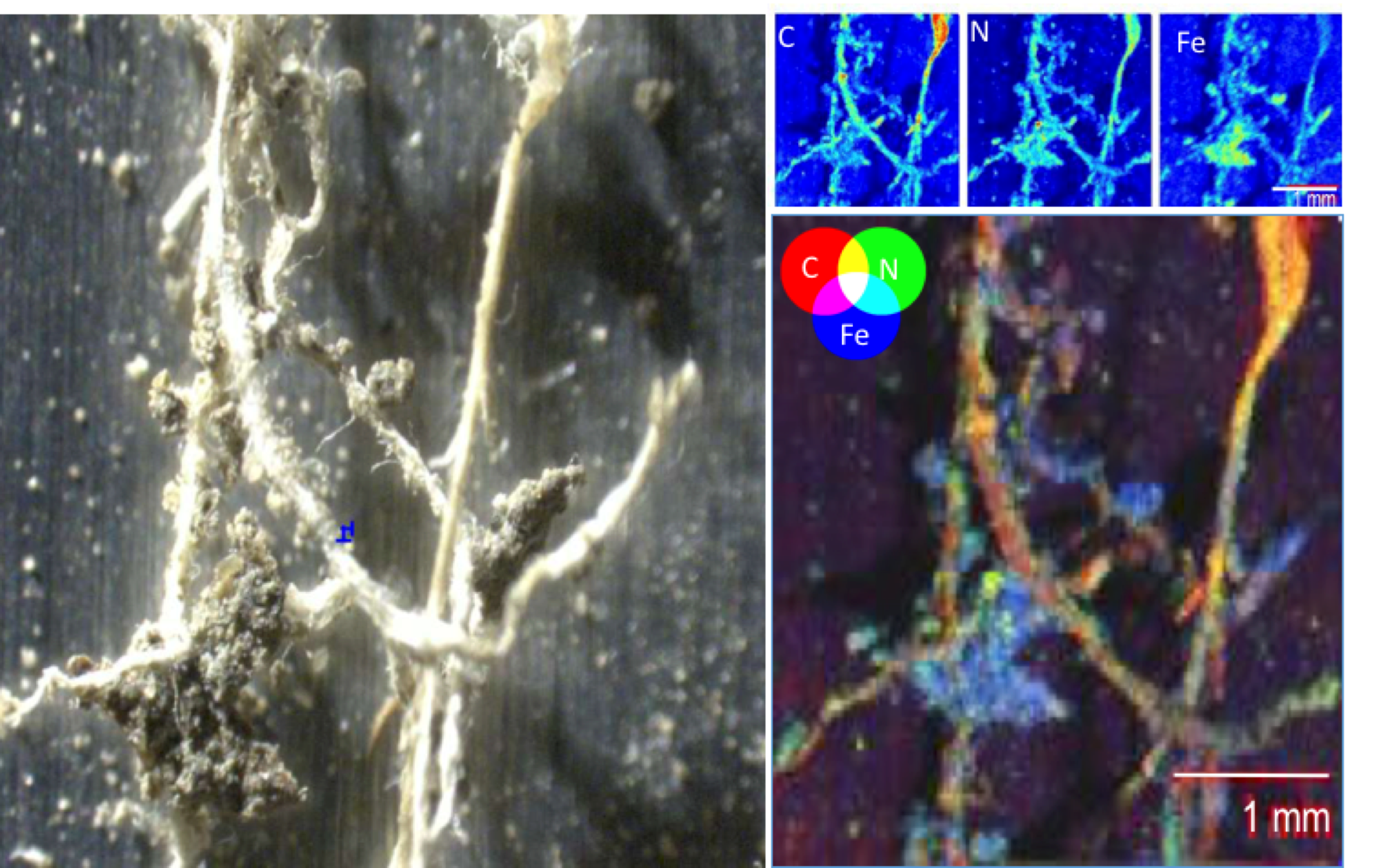Project Goal
To use advanced imaging techniques to link the genetic information of crops to the desired performance and adaptability needed by plant breeders to meet global food demand.
Project Summary
A great deal is known about the genetic aspects and DNA of crops, but how all of this genetic information is linked to plant performance and physical traits (phenotypes) is largely unknown. Project 2.1 uses plant imaging to better understand how plants respond to stress, root-soil interactions, and to examine wax coating on leaves. This exploratory research will link above-ground research with what is happening underground in the soil, leading to a better overall understanding of the plant.
Project Results to Date
When a plant is under stress from drought, heat, or cold, it responds to produce a hormone called abscisic acid (ABA). Abscisic acid helps the plant respond to stress. For example, when water is scarce during a drought, the levels of ABA go up in the plant and ABA closes the pores on the leaves, conserving water.
Chris Phenix and Sue Abrams’ teams are developing hormones that mimic the ABA hormone so that biologists can determine the genetic basis of how a plant responds to environmental stress. Sue Abrams and research assistant Leon Lai are working to develop different versions of ABA (ABA analogs) that can either produce a stronger response in the plant, or can block the effect of ABA completely. These chemicals can be used by biologists studying stress to identify the specific genes responsible for the response and breed crops with greater tolerance to climate change.
Radioisotopes can also be used to study plants as they grow and respond to stress. Chris Phenix and Morshed Chowdhury are working with the PhytoPET system at the Saskatchewan Centre for Cyclotron Sciences (Fedoruk Centre) to produce a short-lived radioisotope which will be used to develop a radiolabeled ABA. The PhytoPET system uses Positron Emission Tomography (PET) scanning, an imaging tool that is traditionally used for human nuclear medicine. This will allow researchers to study the plant for longer periods of time because they can trace how the ABA hormone moves through the plant in real time, without cutting or damaging the plant.

Researchers also know that the nutrients in a plant and overall plant performance are influenced by what's underground - the plant’s roots, soil, and microorganisms. Derek Peak and his researchers are studying how a plant’s DNA and physical traits affect underground interactions between the soil and its microbial communities. This is being conducted through high-throughput plant imaging and soil sampling utilizing resources from the Cyclotron and the Canadian Light Source (Synchrotron) at the University of Saskatchewan.
Conversely, Chithra Karunakaran’s team of researchers are using the model plant Arabidopsis to study important above-ground plant characteristics, such as leaves and epicuticular wax (a coating of wax that covers the outer surface of the plant). How susceptible a plant is to drought, pathogens, and insects depends on its wax composition and quantity. However, the relationship between wax load and composition, wax structure, and tolerance to environmental stresses is still poorly understood. This knowledge is critical for increasing crop tolerance.
Practical Applications
- Project 2.1 is vital in understanding metabolic processes in plants, effects of stress and drought, and how the soil and its contents interact with the plant. It exemplifies which factors influence plant performance, and leads to a deeper understanding of the genetics of these crops. The project also supplies breeders and researchers with a variety of tools that make studying the plant more efficient.
- Those who are rotating crops or growing different varieties will have a better understanding of the microbial communities in the soil and how these interact with and affect the plant. Another benefit of this project is understanding how soil communities are impacted by fertilizer and how to entertain soil communities without fertilizer. This comes with an environmentally friendly impact.
- The breeding of superior crop varieties is a long and involved process that is necessary in meeting the demands of an ever-increasing population. Crop production will be adversely affected by climatic changes, making the ability to develop crops that are tolerant to stress and other environmental factors critical. The development and application of advanced imaging methods enable breeding for ultimate performance: efficiency, soil fertility, overall yield, water and nutrient demands, and decreased susceptibility to heat, drought, or disease. This will lead to better breeding programs and better crop varieties for farmers.
Collaborations
Project 2.1 utilizes technology from the Canadian Light Source (Synchrotron) and Saskatchewan Centre for Cyclotron Sciences (Fedoruk Centre).
The project is also working in collaboration with a number of other P2IRC projects:
- Project 1.1: Phenotype to Genotype: Moving from Model Systems to Crops involves phenotyping in a controlled indoor environment and analyzes leaf wax, in collaboration with University of British Columbia Professor Ljerka Kunst.
- Project 1.3: Plant Pedological Phenotype: Phenotyping the Plant Microbiome is studying how soil interacts with plant roots, and the role microorganisms play in that soil with respect to phenotyping.
- Project 3.1: P2IRC Cloud and Project 3.2: Data Analysis for Rapid Plant Phenotyping are assisting in data rich areas such as generating images of soil samples and developing digital phenotypes, as well as in storing and using information.
Research Team
Project Leads:Loading...
Other Researchers:
Leon Lai
Vishal Jheengut
Morshed Chowdury
Na Liu
Gurbir Singh Dhillon
Ian Andvaag
Tom Regier


